Editor’s Note: This feature first appeared in our companion service, The Archery Wire (www.archerywire.com).
One of my clients partners with the Wyoming Migration Initiative and it is fascinating work. When we post about the animals’ movement from week to week- people are enthralled. So with that said, I asked Patrick to provide an overview of the Initiative so that you, too, can learn and share with your audiences. – Michelle Scheuermann, editor, Archery Wire.
Article written by Patrick Rodgers, Wyoming Migration Initiative at the University of Wyoming
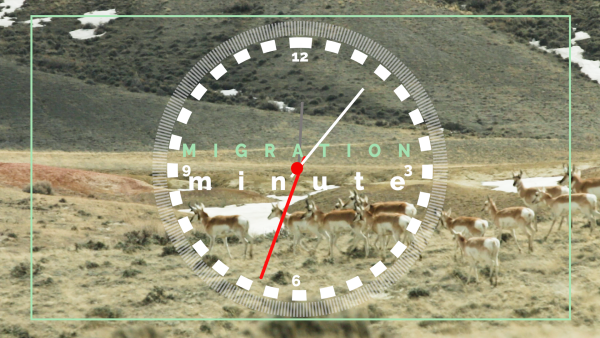
A herd of pronghorn moves across its winter range near the Shirley Rim south of Casper, WY. Photo credit: Patrick Rodgers
Every year biologists are learning more and more about the migrations of big game species, thanks to rapid advances in GPS tracking technology. This research has broken out of the academy to capture headlines across the globe, and rack up millions of video views online. Clearly members of the public — and especially hunters and big game enthusiasts — are hungry to learn more about this phenomenon.
In response, the Wyoming Migration Initiative (WMI) at the University of Wyoming has teamed up with a number of agencies and organizations to produce a new series called Migration Minute. It breaks down the latest science and biology jargon into short videos for broad audiences. You can catch it on YouTube, Facebook, Instagram, and Twitter.
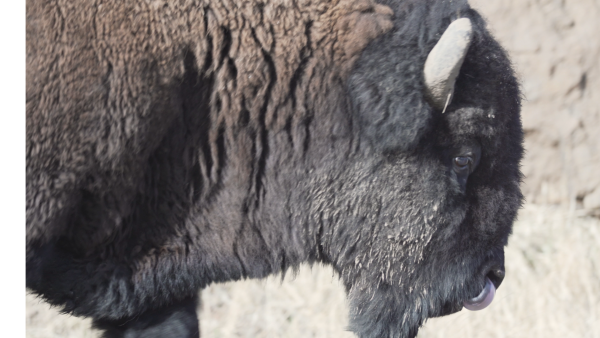
A bull bison licks his nose while walking between feeding sites near Pahaska Tepee, WY. Bison are one of many of Wyoming’s migratory big game species. Photo credit: Patrick Rodgers
The Wyoming Migration Initiative is a team of scientists, filmmakers, and cartographers formed in 2012 to advance migration research. We have a focus on sharing with the public the incredible discoveries that biologists are uncovering, from how far animals migrate, to how they learn how to take the journeys in the first place. The Migration Minute series is our team’s latest effort to show how scientists can clearly communicate their research and findings to the public using accessible and engaging media.
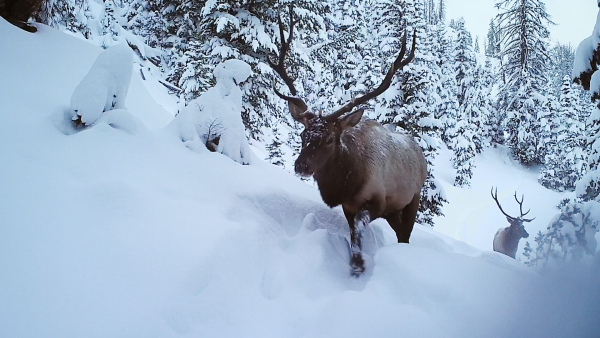
A pair of bull elk forge through snow along their autumn migration route near Dubois, Wyoming. Photo credit: Gregory Nickerson and Travis Zaffarano
“We hope to really give folks a sense of what we’re learning here,” said Patrick Rodgers, WMI Associate Research Scientist and producer of the series. “We want someone to hear the word ‘stopover’ or ‘high-use corridor’ and know exactly what that means. By understanding the science, people should be able to better appreciate what wild animals are doing during migration. We hope this enriches peoples’ experiences on the land, and informs decisions around conservation.”
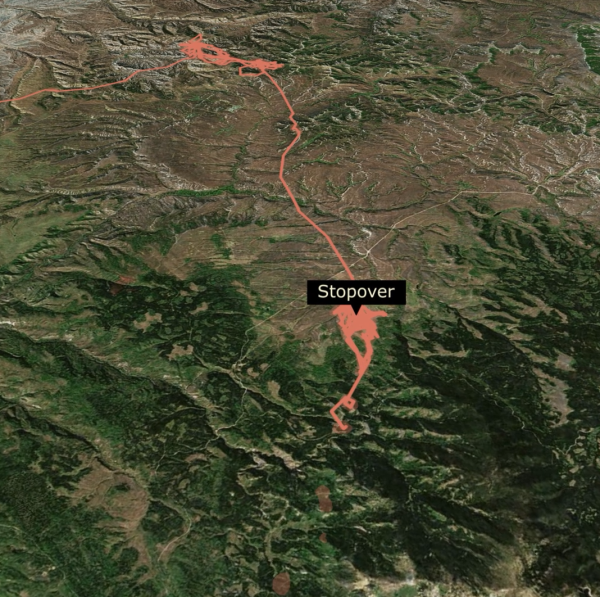
One episode of the ten-part series will be released every Wednesday, starting on October 21, through the fall. If the series garners considerable interest, the team plans to produce additional episodes specifically on threats to migration that have the potential to decrease big game populations.
The series was made possible through partnerships with Wyoming Game and Fish Department, Knobloch Family Foundation, George B. Storer Foundation, National Science Foundation, Muley Fanatic Foundation - Southeast Wyoming Chapter, Muley Fanatic Foundation - Southwest Wyoming Chapter, Wyoming Governor’s Big Game License Coalition, Bureau of Land Management, U.S. Geological Survey, Wyoming Cooperative Fish and Wildlife Research Unit, Safari Club International Foundation and 100 Legacy Fund, and Sitka Gear Ecosystem Grants.
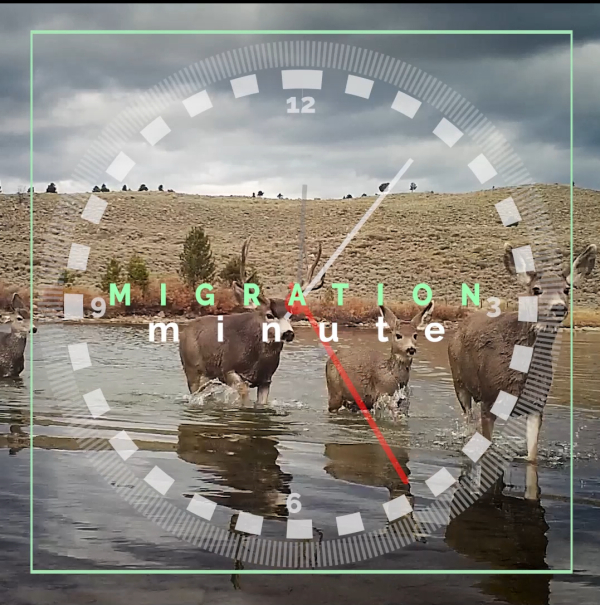
A group of mule deer wades across the outlet of Fremont Lake near Pinedale, WY along the famous Red Desert to Hoback migration corridor. Photo credit: Tanner Warder
WMI was founded in 2012 with the goal of helping the public understand, appreciate, and conserve Wyoming’s migratory ungulates by conducting innovative research and sharing its findings. Learn more at http://www.migrationinitiative.org/, or contact us at: info@migrationinitiative.org Be sure to follow @migrationinitiative on Facebook and Instagram, and @wyo_migrations on Twitter.